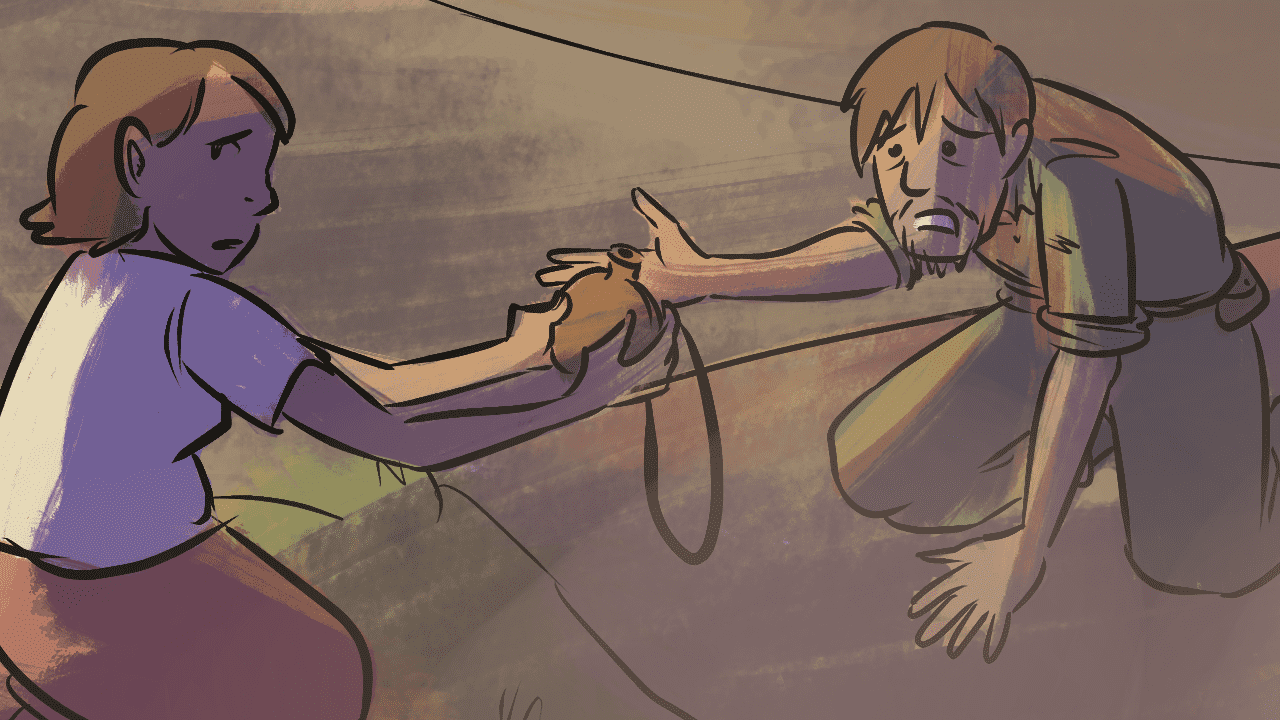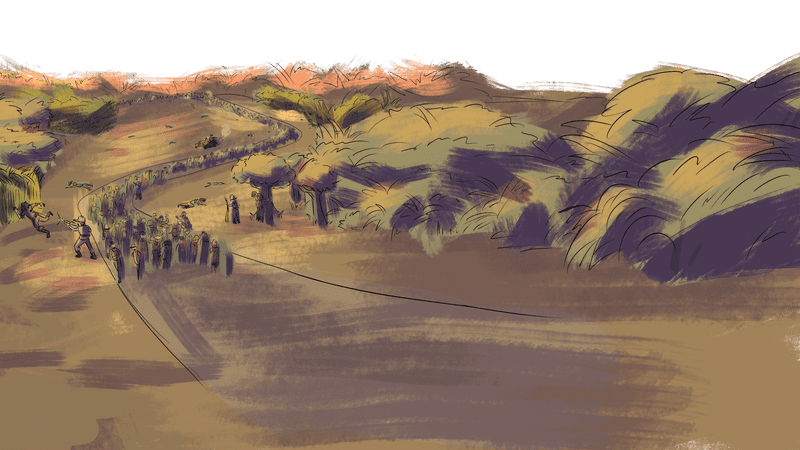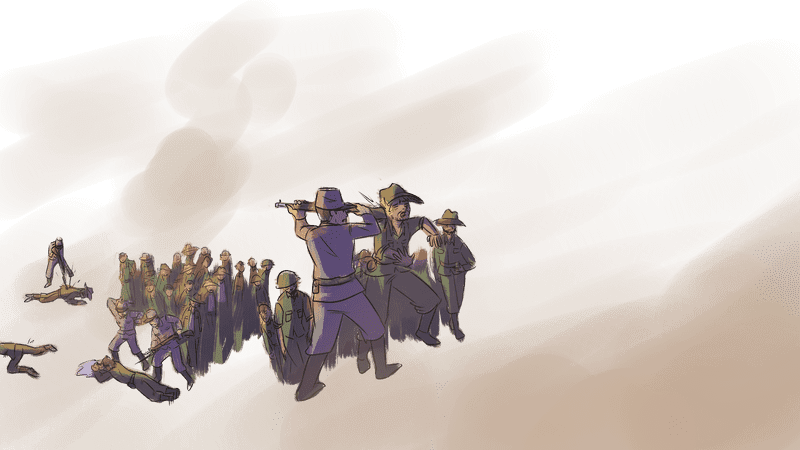Chapter Two: The Crucible of War
January – May, 1942
Bataan and Corregidor
In April, 1942, 76,000 men—64,000 of them Filipinos— began the Bataan Death March.
On the Bataan Peninsula northwest of Manila, about 80,000 troops dug in for a long battle to hold off the invasion by Japanese forces. Most of them were Filipino soldiers newly recruited into the Philippine Army. With no reinforcements and difficult conditions, it was a hopeless fight. Food, water, and ammunition soon ran short.
“USAFFE troops will undergo one of the longest and fiercest sieges of the war.”
An Untold Triumph: America's Filipino Soldiers
In Manila Bay, the island fortress of Corregidor held out. From there, Philippine Commonwealth President Manuel Quezon delivered radio speeches to boost the morale of Filipino civilians uncertain about their country’s future. By late February, Quezon, together with USAFFE military commander Douglas MacArthur, withdrew to Australia. MacArthur famously promised “I shall return.”
The Fall
Despite overwhelming odds, for a time, USAFFE forces held the line. But reinforcements from Tokyo strengthened the Japanese hand. On April 9, USAFFE forces at Bataan surrendered. Soldiers, nurses, and civilians at Corregidor held out until May 6, and thousands were taken as prisoners of war. Although American and Filipino soldiers had waged one of the toughest fighting retreats in history, and had held on longer than anyone expected, Bataan was one of the worst defeats for the U.S. military in its history.
The grueling trek came to be known as the Bataan Death March.
Beginning on April 10, 1942, 76,000 men—64,000 of them Filipinos—began the long journey out of Bataan to military prison camps miles away. The grueling trek, more than 70 miles of it on foot, came to be known as the Bataan Death March.
Jesse Baltazar
October 8, 1920 – April 12, 2016
WWII veteran and advocate for Filipino veterans benefits
After surviving the Bataan Death March, Jesse Baltazar escaped and joined the guerrilla resistance in the Philippines. Born in Manila, Baltazar joined USAFFE in 1941 following the Japanese attack on Pearl Harbor. Despite being wounded during the Battle of Bataan in 1942, Baltazar, with the help of a Filipino fisherman, was able to escape on the third day of the Bataan Death March. Baltazar then joined the Philippine resistance, providing intelligence on Japanese military locations. After the war he immigrated to the U.S., intent on continuing his military career. In 1948, Baltazar became the first native-born Filipino to be commissioned in the U.S. Air Force. Baltazar would go on the serve for 20 years in the U.S. Air Force, retiring as a Major before joining the State Department in 1966. Despite his years of service, Baltazar continued to fight for recognition for Filipino Veterans into his 90s.
“Sometimes I would faint from hunger, but there was always a man next to me, some I knew, some I didn't, who would help carry me.”
Duty to Country
The men faced heat, dust, thirst, and disease. They endured mistreatment at the hands of their captors. But along with endurance, there were moments of bravery and kindness. Risking execution, some soldiers escaped the march, hopeful they could hide out or form new guerrilla units to await U.S. reinvasion.
Filipino villagers who lived along the route risked their lives to offer food and water to men along the march. At Bataan, Filipinos and Americans who had served side by side under the same flag and under the same commander, now marched together, making the same sacrifices.
Escape from Bataan
Six grueling days later, Filipino and American troops reached their final destination at Camp O’Donnell. They were exhausted, ill, and defeated. Between 7,000 and 10,000 had died along the way, and some 16,000 more soldiers died in the first two months at the camp.
Master Sgt. Aaron Kliatchko
1887 – December 31, 1944
WWII American POW and resistance fighter
Kliatchko smuggled supplies and provided religious services for the 121 Jewish prisoners housed at the Cabanatuan prison camp. Born in 1887 in Eastern Europe, in 1907 Kliatchko immigrated and joined the U.S. Army. He was sent to the Philippines and chose to stay in the islands after his discharge. 55 years old when the Japanese invaded in 1941, Kliatchko nonetheless volunteered to join the fight. After surviving the Bataan Death March, his job at the Cabanatuan prison camp allowed him to leave the prison grounds. Daringly, Kliatchko used the opportunity to gather supplies, including medicines, to smuggle back into the camp. In December 1944, Kliatchko was among 1600 prisoners aboard a Japanese “hell ship” struck by American bombers. Though he survived the incident, Kliatchko was moved to another ship where he died two weeks later from his wounds.
7,000 – 10,000 died on the march and ~ 16,000 more died the first two months in prison camp.
Next Section
1941 – 1945
Occupation
Occupation transformed daily life, with Japanese forces keeping a close eye on civilians.
Explore



